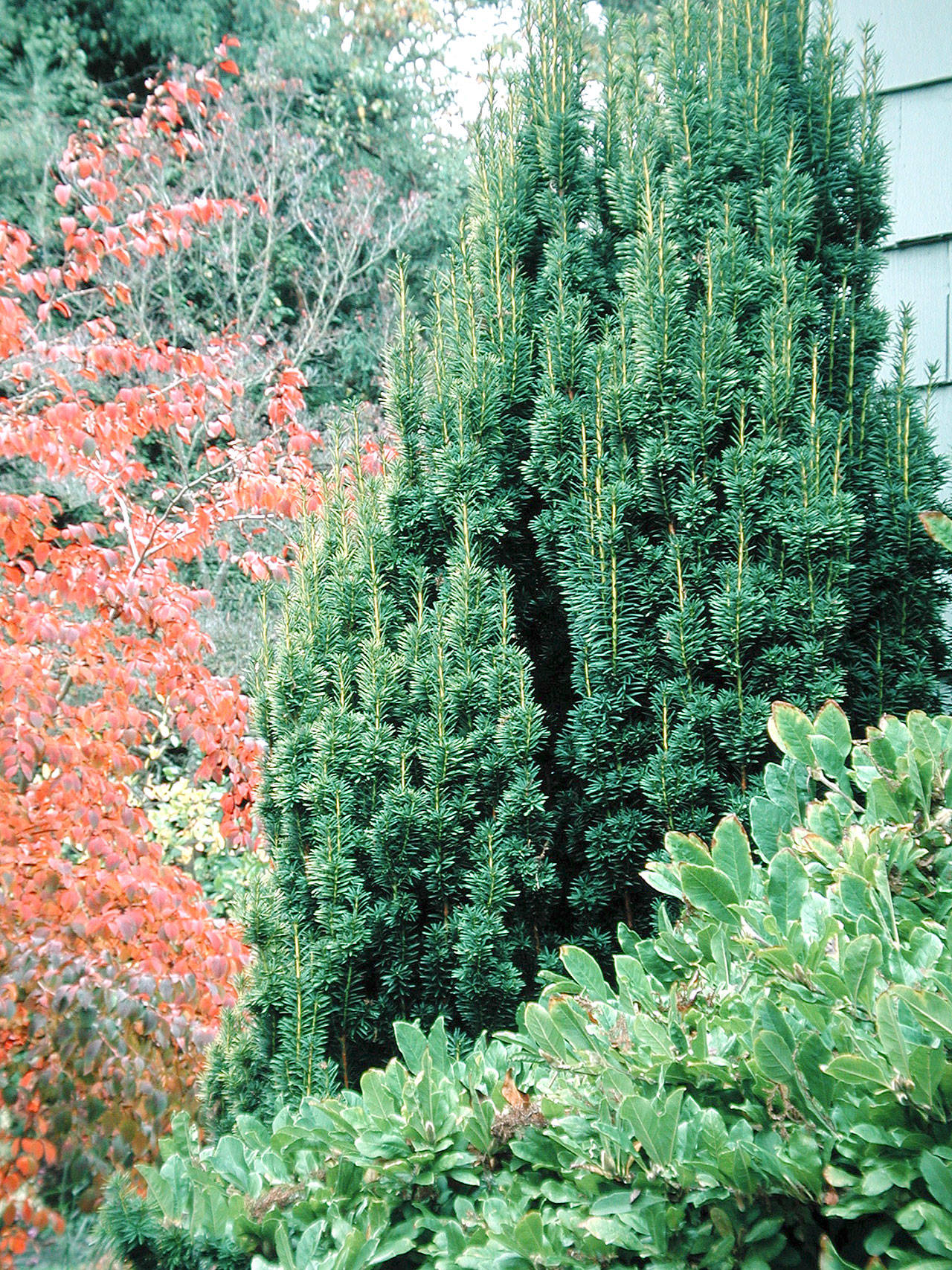What: Taxus baccata “Fastigiata,” with the common name Irish yew, is an extremely useful evergreen conifer for sun or shade. Most commonly used for hedging purposes, it has a naturally upright form and takes shearing well. It was discovered in Ireland in 1780 and has been a favorite for formal hedges ever since. A hedge of Irish yew, with its dense form and dark-green color, makes a dramatic backdrop for a perennial or mixed shrub border. Irish yews are often used individually, as a vertical exclamation point in a border, or paired to set off an entryway. The plants are more expensive and slower growing than the more common cedar hedging, but the wait is worthwhile. As yews are among the few conifers that thrive in dry shade, they can be used to provide a textural contrast to other plants in a shady garden.
Where: “Fastigiata” prefers well-drained soil and is drought tolerant once established. Plant it in full sun or light to open shade.
Size: This evergreen grows to be 20 feet tall and 5 feet wide when mature.
Care: “Fastigiata” is a female clone, so it bears fruit. Yew bark, foliage and fruit can be toxic, so site plants with care. Irish yew is generally pest and disease free, but it can get scale (and the resulting sooty mold) and black vine weevil. For a hedge, set plants 2 feet apart and shear as required. Like all yews (but unlike most conifers), it can be pruned back to old wood and will re-sprout readily.
— Richie Steffen, Great Plant Picks
Talk to us
> Give us your news tips.
> Send us a letter to the editor.
> More Herald contact information.

























